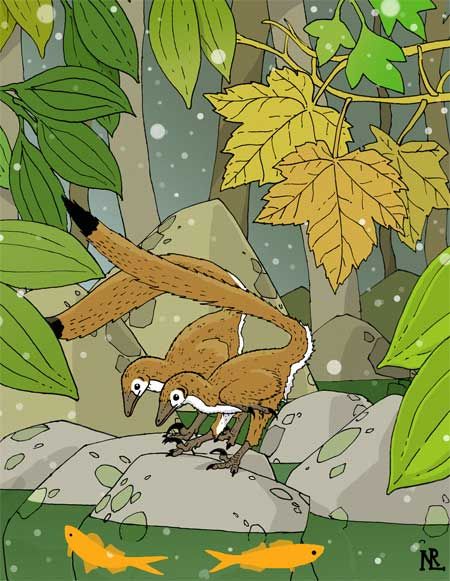New North American Dinosaur Was Smaller Than Housecat

Tyrannosaurus rex and other massive Mesozoic creatures might have had a little predator nipping at their ankles and pilfering their young. Scientists have described the smallest dinosaur in North America, and it was a carnivore.
The new carnivorous dinosaur was smaller than a modern housecat and likely hunted insects, small mammals and other prey through the swamps and forests of the late Cretaceous Period (75 million years ago, precisely) in southeastern Alberta, Canada.
Weighing approximately 4 pounds (2 kilograms) and standing about a foot and a half tall (50 centimeters), Hesperonychus elizabethae resembled a miniature version of the bipedal predator Velociraptor, to which it was closely related. Hesperonychus walked on two legs and had razor-like claws and an enlarged sickle-shaped claw on its second toe. It had a slender build and slender head with dagger-like teeth.
"It was half the size of a domestic cat and probably hunted and ate whatever it could for its size — insects, mammals, amphibians and maybe even baby dinosaurs," said Nick Longrich, a paleontology research associate in the University of Calgary's Department of Biological Sciences. "It probably spent most of its time close to the ground searching through the marshes and forests that characterized the area at the end of the Cretaceous."
Small carnivorous dinosaurs seemed to be completely absent from the North American environment, which seemed bizarre because today the small carnivores outnumber the big ones, Longrich said.
"It turns out that they were here and they played a more important role in the ecosystem than we realized," he said.
The finding is detailed by Longrich and University of Alberta paleontologist Philip Currie in the March 16 early online edition of the journal Proceedings of the National Academy of Sciences.
Sign up for the Live Science daily newsletter now
Get the world’s most fascinating discoveries delivered straight to your inbox.
Fossilized remains of Hesperonychus, which means "western claw," were collected in 1982 from several locations including Dinosaur Provincial Park. The most important specimen, a well-preserved pelvis, was recovered by Alberta paleontologist Elizabeth (Betsy) Nicholls, after which the species is named. Nicholls was the curator of marine reptiles at the Royal Tyrrell Museum in Drumheller. She died in 2004.
The fossils remained unstudied for 25 years until Longrich came across them in the University of Alberta's collection in 2007. Longrich and Currie focused on fossilized claws and a well-preserved pelvis for their description.
"The claws were thought to come from juveniles — they were just so small. But when we studied the pelvis, we found the hip bones were fused, which would only have happened once the animal was fully grown," Longrich said. "Until now, the smallest carnivorous dinosaurs we have seen in North America have been about the size of a wolf. Judging by the amount of material that was collected, we believe animals the size of Hesperonychus must have been quite common on the landscape."
Currie and Longrich last year described the previous record-setting small North American dinosaur, a chicken-sized insectivore named Albertonykus borealis.
The discovery of Hesperonychus is the first sign of small carnivorous dinosaurs in North America and also extends the timeframe of small, birdlike dromaeosaurs known as the Microraptorinae in the fossil record by about 45 million years.
- Video: A Meal with the 'Leonardo' Dino
- A Brief History of Dinosaurs
- Gallery: Drawing Dinosaurs












